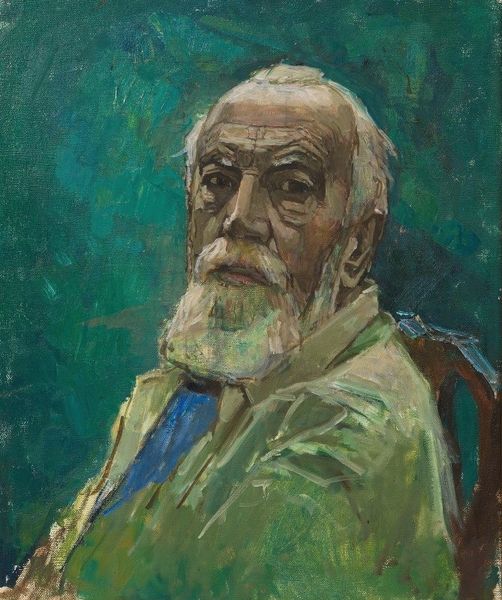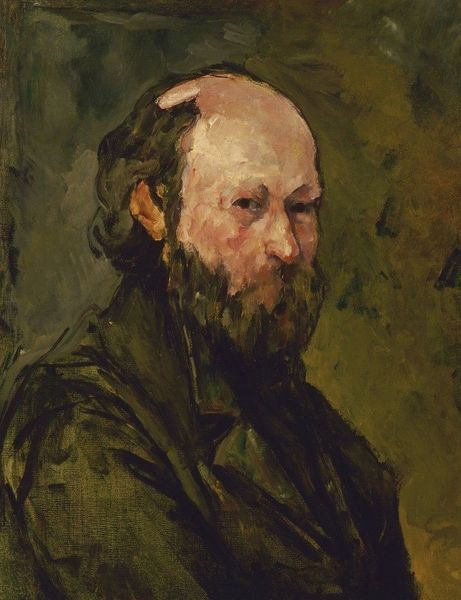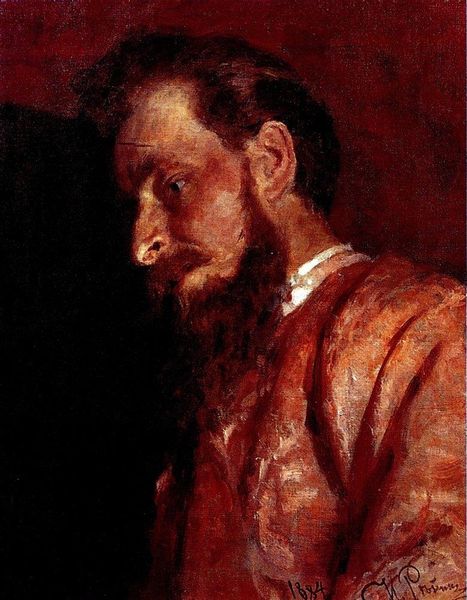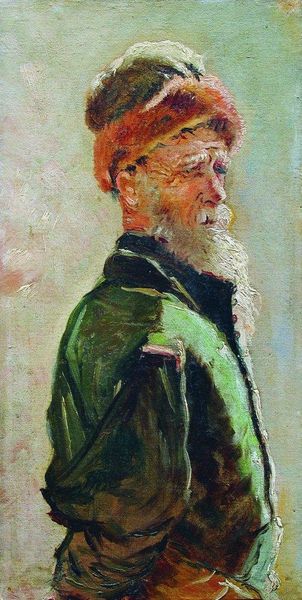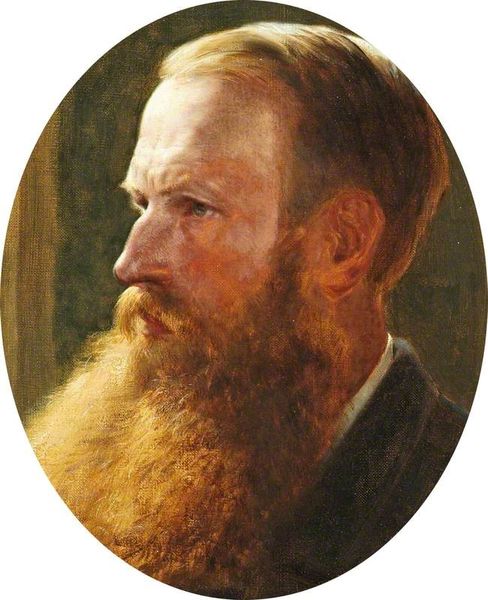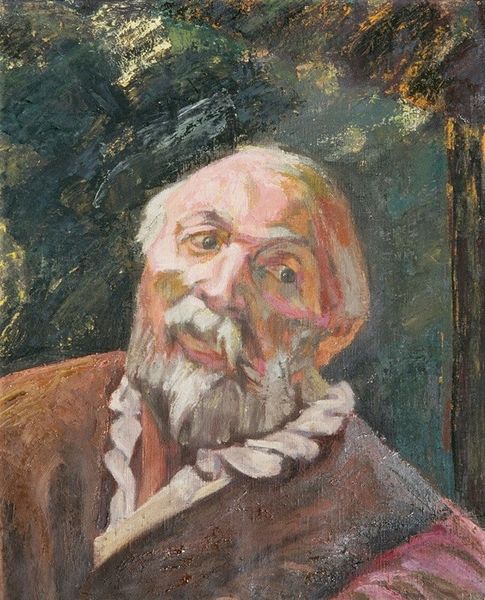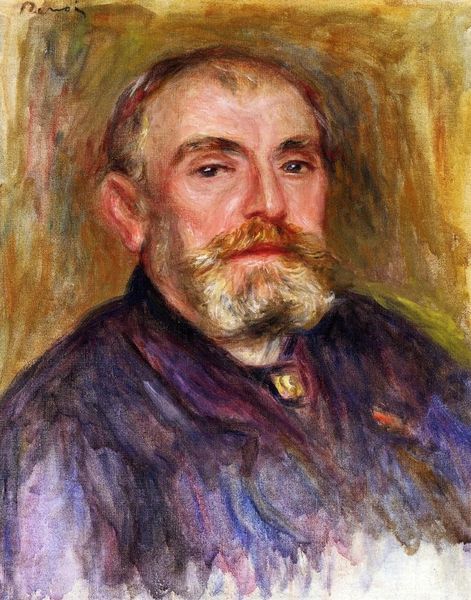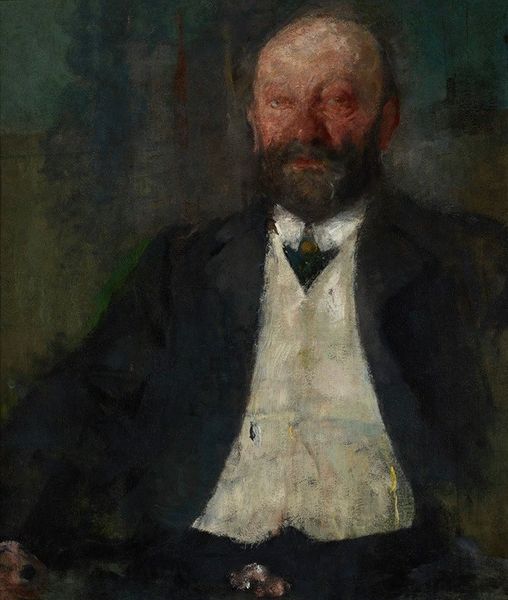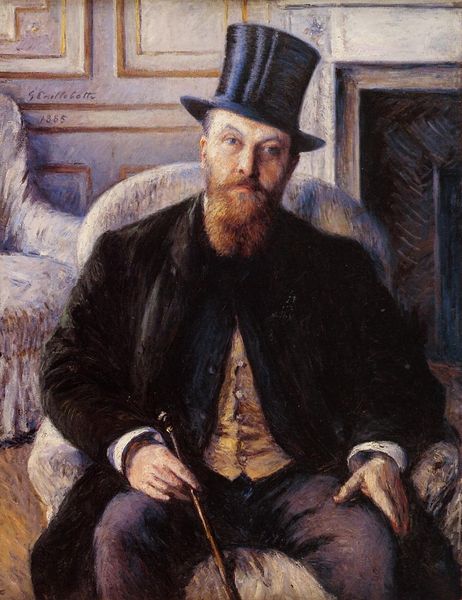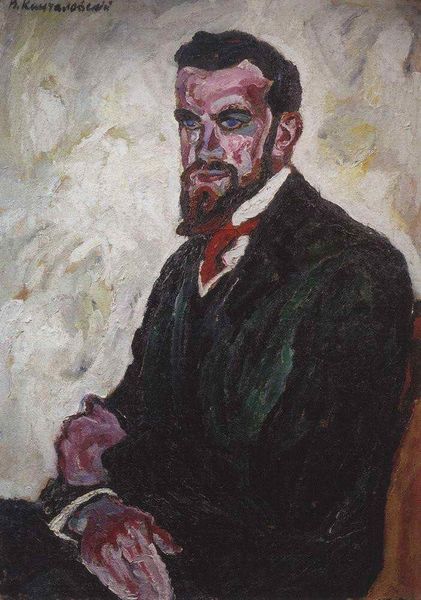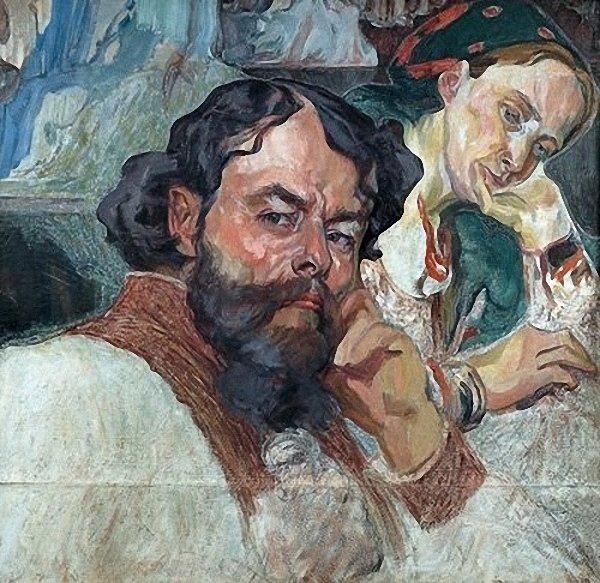
Copyright: Public domain
Editor: This is Ilya Repin's "Portrait of N.V. Delyarov," created in 1910, using oil paint. The vibrant reds and oranges are striking, almost overwhelming at first glance. What elements of composition stand out to you? Curator: The interplay between form and texture commands immediate attention. Observe the visible brushstrokes, their directional energy constructing the figure. Note how impasto creates a tangible surface, a visual language independent of representational accuracy. Editor: So you're saying the way the paint is applied is more important than what is being depicted? Curator: Not "more" important, but intrinsically linked. The materiality of the paint itself conveys meaning. See how Repin uses short, broken strokes in the background versus the longer, more blended strokes in Delyarov's face, directing our focus. What effect does that textural variation produce for you? Editor: It definitely emphasizes Delyarov as the subject. The contrast is quite stark, making the figure pop, in a way, pulling forward away from the more chaotic brushwork in the background.. Curator: Precisely. Now, consider the color palette. While predominantly warm, the introduction of cooler tones--greens and blues within the shawl and background--establishes a dynamic tension, averting chromatic monotony and furthering the textural depth. Editor: I see that now! I hadn't really noticed those cooler colours initially but they bring out the richness of the warmer shades.. Curator: Reflect upon the visual strategies at play, not only in representing the subject, but also in creating an object of aesthetic contemplation. Editor: So, rather than trying to understand Delyarov, the viewer is invited to consider Repin's method of communicating depth through his materials.. I never thought of it that way before! Curator: Precisely! And I think exploring that point offers another valid perspective.
Comments
No comments
Be the first to comment and join the conversation on the ultimate creative platform.
